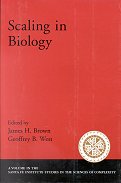It includes theoretical discussions of scaling, the renormalization group, the standard model which encompasses the electroweak theory and quantum chromodynamics, grand unified theories including supersymmetry, superstrings and the family problem. The experimental articles focus on tests of the standard model, underground experiments, and accelerator developments including plans for the SSC. The volume closes with a provocative round table discussion among workers in the field that gives a broad perspective as well as personal viewpoints.


